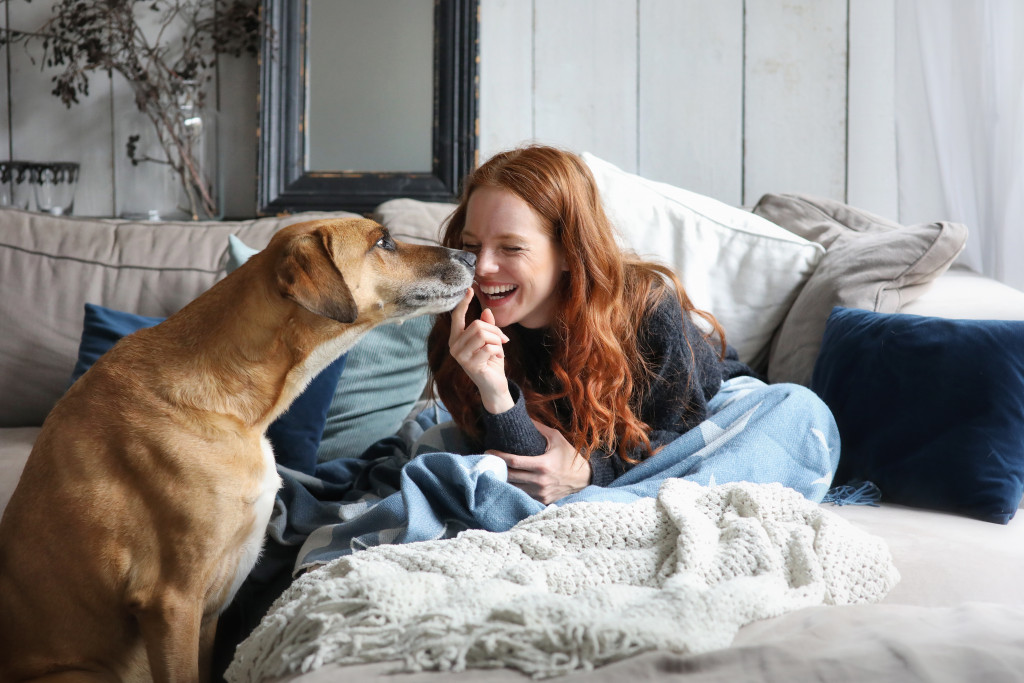Dogs can significantly change a person’s life. They provide people with companionship, love, and support and are also known as a person’s best friends. In fact, owning a dog can be good for a person’s health and well-being. People who own dogs have lower blood pressure and cholesterol levels. They are also less likely to suffer from depression.
Dogs can understand up to 250 words and gestures and learn up to 10 new words a day. Dogs also have a sense of smell that is 10,000 times more powerful than a human’s. This means they can be trained to sniff out bombs, drugs, and other illegal substances. They can also be trained to track down missing people.
However, dogs cannot speak like humans. They communicate through their actions and body language. They use vocalizations and scents to communicate with humans. But people often do not understand what they are trying to tell. So, dog owners must learn how to communicate effectively with their furry friends. Here are some ways to do so:
Observe your dog’s body language
If you’ve tried teaching your dog a new trick, you know communication is critical. But did you know that your dog communicates with you all the time, even when you’re not trying to teach them anything? By understanding your dog’s body language, you can learn a lot about their thoughts and feelings.
For example, a dog wagging its tail is usually happy, while a dog with its tail between its legs feels scared or submissive. Paying attention to your dog’s body language can build a stronger bond and better relationship with your best friend.
Try professional help
Are you struggling to communicate effectively with your dog? You’re not alone. Dogs are family members, and just like any other family member, they can be tough to understand sometimes. That’s where professional dog behavior training comes in. A dog behavior trainer can help you to learn how to read your dog’s body language, understand what they’re trying to tell you, and build a better relationship with your furry friend.
With the help of a dog behavior trainer, you can finally start effectively communicating with your dog – and enjoy all the benefits of it. So if you’re struggling to communicate with your dog, don’t hesitate to seek professional help. It could make all the difference for you and your pup.
Use positive reinforcement

If you’ve ever tried to train a dog, you know it’s essential to communicate effectively. One of the most important things to remember when speaking with your dog is to use positive reinforcement. Dogs are highly responsive to positive reinforcement, which is why it’s such an effective training tool. When you use positive reinforcement, you reward your dog for good behavior instead of punishing them for bad behavior.
As a result, your dog is more likely to repeat the behavior you’re reinforcing. So, if you want your dog to sit on command, give them a treat or verbal praise every time they do it. Over time, they’ll learn that sitting pleases you, and they’ll be more likely to do it when you ask them to.
Create a calm environment
One of the most important things to remember when communicating effectively with your dog is to create a calm environment. Dogs are susceptible to changes in energy, and if you’re feeling anxious or stressed, your dog is likely to pick up on that. Of course, there are times when it’s impossible to avoid being tense around your dog – during thunderstorms, for example.
In these cases, it’s helpful to have some calming techniques that you can fall back on. For instance, you might try sitting or lying down on the floor with your dog, speaking in a soft, soothing voice, and offering treats. Creating a calm environment can help your dog feel more relaxed and open to communication.
Be consistent
Have you ever noticed that your dog seems to understand you better on some days than others? It’s not just your imagination-dogs are actually quite sensitive to changes in our tone of voice, body language, and energy level. This means that if you want to effectively communicate with your dogs, you must be consistent in your cues.
For example, if you always use a specific word or hand gesture for cueing your dog to sit, stick with that cue and don’t switch to something else partway through training. Dogs can quickly become confused when we’re inconsistent, so it’s important to ensure that our cues are always clear. The good news is that once you get into the habit of being consistent, communication with your furry friend will become second nature!
The bottom line
Communicating effectively with your dog can be a challenge, but it’s definitely possible. By using positive reinforcement, creating a calm environment, and being consistent with your cues, you can start to build a better relationship with your furry friend. And if you’re struggling to communicate with your dog, don’t hesitate to reach out for professional help.







